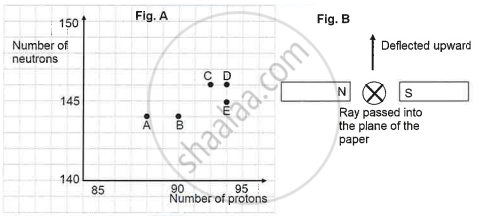Advertisements
Advertisements
Question
For Fleming's left-hand rule, write down the three things that are 90° to each other, and next to each one write down the finger or thumb that represents it.
Solution
In Fleming's left-hand rule, when thumb, forefinger and central finger are kept mutually perpendicular to each other:
(a) Thumb represents force.
(b) Forefinger represents magnetic field.
(c) Central finger represents current.
APPEARS IN
RELATED QUESTIONS
State Fleming's left hand rule.
Observe the following figure:

If the current in the coil A is changed, will some current be induced in the coil B? Explain.
The magnetic field lines in the middle of the current-carrying solenoid are?
(a) circles
(b) spirals
(c) parallel to the axis of the tube
(d) perpendicular to the axis of the tube
Two coils A and B of insulated wire are kept close to each other. Coil A is connected to a galvanometer while coil B is connected to a battery through a key. What would happen if:
the current is stopped by removing the plug from the key?
Explain your answer mentioning the name of the phenomenon involved.
State under what conditions force acting on a current carrying conductor which is freely suspended in a magnetic field can be maximum.
The north pole of Earth’s magnet is in the ____________.
The strength of magnetic field around a current-carrying conductor is ____________.
A magnetic field directed in north direction acts on an electron moving in east direction. The magnetic force on the electron will act ____________.
A copper wire is held between the poles of a magnet

The current in the wire can be reversed. The pole of the magnet can also be changed over. In how many of the four directions shown can the force act on the wire?
|
The graph (fig A) illustrates the correlation between the number of protons (x-axis) and the number of neutrons (y-axis) for elements A, B, C, D, and E in the periodic table. These elements are denoted by the letters rather than their conventional symbols. When the element C, depicted in the graph, undergoes radioactive decay, it releases radioactive rays. When these rays are directed into the plane of the paper in the presence of a magnetic field, as indicated in the fig B, they experience deflection, causing them to move upwards.
|
Name the law used to identify the radioactive radiation emitted by the element.

